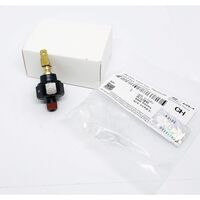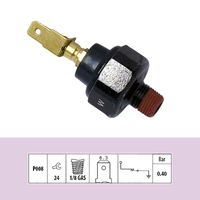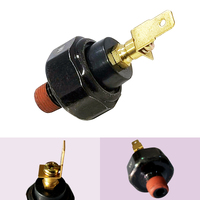
*OEM Quality* Oil Pressure Switch for Ford Territory SX SY SZ 4.0L 6Cyl Turbo
$34.45
An Engine Oil Pressure Switch (also known as an oil pressure sensor) is a critical component in your vehicle’s engine management system. It continuously monitors the oil pressure in your engine, ensuring that the pressure remains within the optimal range for smooth operation. When oil pressure falls below safe levels, this switch sends a signal to your vehicle’s engine control unit (ECU) or oil pressure gauge, triggering a warning light on the dashboard to alert you of potential issues.
How It Works:
Why You Need a Reliable Engine Oil Pressure Switch:
Symptoms of a Faulty Oil Pressure Switch:
Common Causes of Oil Pressure Sensor Failure:
Troubleshooting and Replacement:
If you suspect a faulty oil pressure switch, check your oil levels and inspect the sensor for damage or leaks. If necessary, test the switch and replace it with a high-quality, compatible replacement to ensure your engine remains protected and performs at its best.
What does an oil pressure switch do?
It monitors the engine's oil pressure and turns off or on a warning light or controls an oil pressure indicator.
Where are these sensors located?
Usually installed in the cylinder block close to an oil filter or at the oil filter housing.
Will a malfunctioning oil pressure switch illuminate the warning light or affect vehicle operation?
Yes, it can. The switch activates the oil pressure warning light if the oil pressure falls below safe levels.
How do we determine if these sensors are malfunctioning?
The best way to test if your sensor is bad is through the lights on the oil pressure gauge. If the low oil pressure warning light comes on when the engine’s oil levels are normal and your engine runs smoothly, you likely have a bad oil pressure sensor.
Why Buy from Us?
As an OEM manufacturer, our supplier has complete control over the manufacturing process, ensuring all pressure sensors are 100% factory-tested for trouble-free performance.

*OEM Quality* Oil Pressure Switch for Ford Territory SX SY SZ 4.0L 6Cyl Turbo
$34.45

OIL Pressure SWITCH 56028807AA for JEEP GRAND CHEROKEE GEN2 WG WJ V8 (4.0L ERH/4
$104.99

OIL Pressure SWITCH for BMW Series 1 E87 E88 F20 E82 116i 118i 120i 130i 135i
$37.56

Oil Pressure Switch for Ford Falcon BA BF FG 6cyl V8 XR6 XR8 Turbo Territory
$34.45

OIL Pressure SWITCH for MINI Cooper Clubman Countryman R55 R56 R57 R58 R59 R60 R
$119.45

*GENUINE OEM* Oil Pressure Switch for Hyundai KIA Mitsubishi Toyota Subaru SUZUK
$42.97

*GENUINE OEM* Oil Pressure Switch for Hyundai SANTA FE SM (2.4L G4JS 2.7L G6EA)
$42.97

*GENUINE OEM* Oil Pressure Switch for KIA CARNIVAL GQ UP (KV6 2.5L V6) 1999-06
$42.97

*GENUINE OEM* Oil Pressure Switch for KIA RIO DC JB (A5D G4ED G4EE) 2000-11
$42.97

*OEM Quality *Oil Pressure Switch for Holden Captiva CG 3.2L V6 2006-2011
$59.97

*OEM Quality *Oil Pressure Switch for Holden Commodore VE VZ V6 3.6L 3.2L Alloyt
$59.97

*OEM Quality *Oil Pressure Switch for Holden Rodeo RA Colorado RC 3.6L V6 2006-2
$59.97

*OEM Quality *Oil Pressure Switch for Holden VE VZ WL WM 3.6L V6 Le0 Ly7 1267478
$59.97

*Oem Quality* Abs Dsc Pressure Sensor For Bmw E46 E60 E63 E85 Z4 Z3 Stability Co
$97.97

*Oem Quality* Abs Pressure Sensor For Bmw E60 E61 525I 530I 545I N52 M54 (04-10)
$97.97

*Oem Quality* Dsc Pressure Sensor For Bmw E46 320I 323I 325I 328I 330I M3 (99-05
$97.97

*OEM Quality* Engine Oil Pressure Switch Sensor for Holden Astra AH TR TS 96-06
$34.95